Trending
Opinion: How will Project 2025 impact game developers?
The Heritage Foundation's manifesto for the possible next administration could do great harm to many, including large portions of the game development community.

Featured Blog | This community-written post highlights the best of what the game industry has to offer. Read more like it on the Game Developer Blogs or learn how to Submit Your Own Blog Post
Music uses many techniques to intensify suspense in games. In Part 2 of this continuing discussion, we consult expert opinions, & examine excerpts of music I composed as a member of the music team for the Homefront: The Revolution first person shooter.

Welcome back to our two-part exploration of the role of tension and intensity in a musical score, and the techniques that can best and most effectively accentuate our audience's nervous excitement. If you haven't read Part One yet, please read that article first, and then come back for the continuation of our discussion.
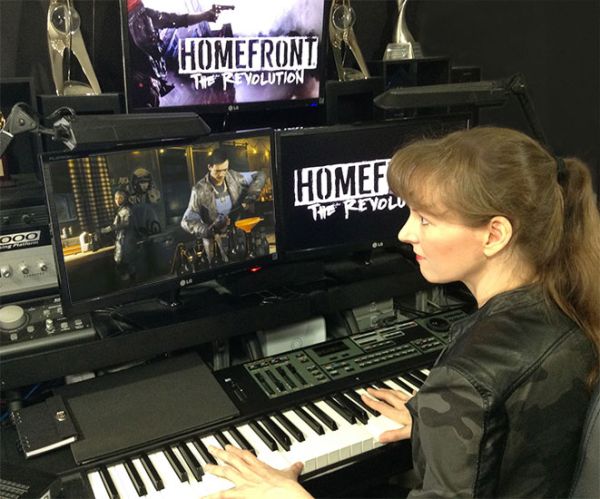 In Part One we explored how popular narrative genres such as horror benefit from a tense musical score, and we studied effective techniques for horror music composition as a model for musical tension-building in any narrative genre. We learned about some techniques from the world of sound design that can add intensity and emotional pressure to our music. We listened to a couple of musical examples that I composed as a member of the music team for Homefront: The Revolution (pictured right). We also consulted the opinions of some top experts in the field to better understand how amplifying tension can make any story feel like a more awesome, satisfying experience. Now, let's move on to the more musical meat-and-bones of the topic: the actual harmonic textures and chord structures of our compositions.
In Part One we explored how popular narrative genres such as horror benefit from a tense musical score, and we studied effective techniques for horror music composition as a model for musical tension-building in any narrative genre. We learned about some techniques from the world of sound design that can add intensity and emotional pressure to our music. We listened to a couple of musical examples that I composed as a member of the music team for Homefront: The Revolution (pictured right). We also consulted the opinions of some top experts in the field to better understand how amplifying tension can make any story feel like a more awesome, satisfying experience. Now, let's move on to the more musical meat-and-bones of the topic: the actual harmonic textures and chord structures of our compositions.
Tense, frightening music may be punctuated by techniques such as bumpers and whooshes (as we discussed in Part One), but that's just part of the story. The other half involves the textures, swells, rhythms and harmonic relationships that work together to keep the listener on edge. As before, let's use the music of the horror genre as an example of how to build emotional intensity in high-stakes, perilous situations.
 "Horror music is largely designed to have an "assaultive character."" writes University of North Texas professor Harry Benshoff (pictured left) in his book, A Companion to the Horror Film. "This can be achieved through a variety of means, including sheer volume (as in ‘noisy’ outbursts that erupt on the soundtrack each time a monster appears or violence ensues), musical timbre (in characteristic instrumental sounds like ‘screeching’ violins or ‘haunting’ electronic synthesisers), or specific musical techniques, such as repetitious drones (tension built in and through sustained notes), clashing dissonances (unusual combinations of notes), and stingers (sudden musical blasts that coincide with moments of shock and revelation)."
"Horror music is largely designed to have an "assaultive character."" writes University of North Texas professor Harry Benshoff (pictured left) in his book, A Companion to the Horror Film. "This can be achieved through a variety of means, including sheer volume (as in ‘noisy’ outbursts that erupt on the soundtrack each time a monster appears or violence ensues), musical timbre (in characteristic instrumental sounds like ‘screeching’ violins or ‘haunting’ electronic synthesisers), or specific musical techniques, such as repetitious drones (tension built in and through sustained notes), clashing dissonances (unusual combinations of notes), and stingers (sudden musical blasts that coincide with moments of shock and revelation)."
 This viewpoint is echoed by John Rose (pictured right), a software engineer at Lumos Labs and contributing author to the 2004 book Software Engineering for Game Developers. "Music and games are alike in their fundamental need for tension," Rose writes in an article for the Gamasutra site. "Just as our eyes can sense conflict, our ears too can detect tension and release in sound. This conflict usually comes from skillful use of tonic and dominant tones, which people perceive as either discordant (building tension) or consonant (releasing tension). A musician can create anxiety just by playing certain chords, resolving it by playing others."
This viewpoint is echoed by John Rose (pictured right), a software engineer at Lumos Labs and contributing author to the 2004 book Software Engineering for Game Developers. "Music and games are alike in their fundamental need for tension," Rose writes in an article for the Gamasutra site. "Just as our eyes can sense conflict, our ears too can detect tension and release in sound. This conflict usually comes from skillful use of tonic and dominant tones, which people perceive as either discordant (building tension) or consonant (releasing tension). A musician can create anxiety just by playing certain chords, resolving it by playing others."
To expand upon this idea, let's watch a video produced by the folks at the HowStuffWorks YouTube channel, entitled "Scary Music":
 If we're looking for further support for these conclusions, we can rely on the work of Professor Michael Epstein (pictured left) of Northeastern University's Auditory Modeling and Processing Lab. In an interview with Boston Magazine, Epstein talks about his 17 years of research into why certain alarms and scary film scores have the power to instantly incite and deepen fear in listeners. "Common musical intervals, changed slightly to create dissonance, are immediately disconcerting,” Epstein says. “The more a film uses them, the more uncomfortable we are."
If we're looking for further support for these conclusions, we can rely on the work of Professor Michael Epstein (pictured left) of Northeastern University's Auditory Modeling and Processing Lab. In an interview with Boston Magazine, Epstein talks about his 17 years of research into why certain alarms and scary film scores have the power to instantly incite and deepen fear in listeners. "Common musical intervals, changed slightly to create dissonance, are immediately disconcerting,” Epstein says. “The more a film uses them, the more uncomfortable we are."
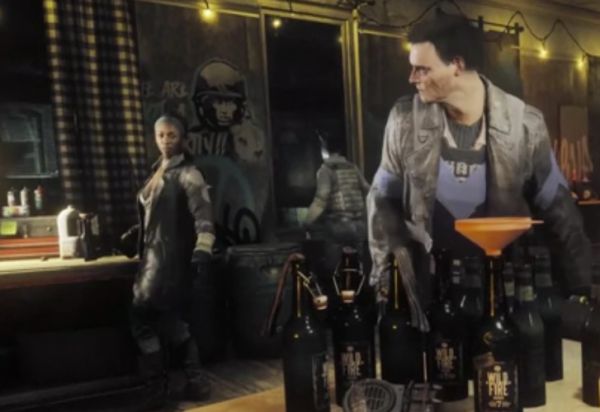 I used dissonance frequently in the music I composed for Homefront: The Revolution. In the following short excerpt (audio-only to prevent spoilers), a group of resistance fighters are surprised by a sudden enemy raid on their safe house (pictured right).
I used dissonance frequently in the music I composed for Homefront: The Revolution. In the following short excerpt (audio-only to prevent spoilers), a group of resistance fighters are surprised by a sudden enemy raid on their safe house (pictured right).
In the audio clip below, you'll hear dissonant chords that rise into crescendos and then drop into dark tone-cluster impacts that punctuate the moment. (Warning: this audio clip contains M-rated language)
Finally, in the escalating waves of tension and release, we shouldn't forget that silence is also a valid choice for us as game composers. Sometimes, it's best to let the music die away, leaving in its place a hushed moment.
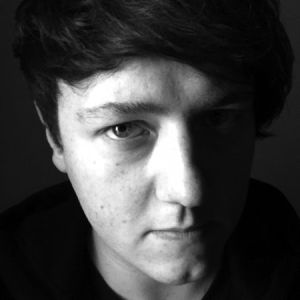 Such choices can feel tremendously dramatic, highlighting a particularly significant story development or character action.
Such choices can feel tremendously dramatic, highlighting a particularly significant story development or character action.
"When a game decides to just shut the hell up, I always appreciate it. Silence can be a powerful thing," writes editor Andy Kelly (pictured left) in an article for PC Gamer. "Leaving the player alone with their thoughts like this is a great way to build tension.
 "'Perceived Silence' is what you might be hearing if you are sitting in a quiet room reading this article," writes film and video game composer Milosz Jeziorski (pictured right) for the site No Film School. "In a feature film, these 'silent' moments give the audience time to breathe; a time to sink into the picture. They often work well as downtime following a BIG and LOUD scene."
"'Perceived Silence' is what you might be hearing if you are sitting in a quiet room reading this article," writes film and video game composer Milosz Jeziorski (pictured right) for the site No Film School. "In a feature film, these 'silent' moments give the audience time to breathe; a time to sink into the picture. They often work well as downtime following a BIG and LOUD scene."
A great exploration of this concept can be found in "The Art of Silence" - a video produced by Tony Zhou, creator of the video series Every Frame a Painting. This video examines Martin Scorsese's use of silence in his films, and it's a good demonstration of why silence can sometimes be very powerful:
I used silence periodically in the music I composed for Homefront: The Revolution. Using silence in my compositions served to accentuate moments of dramatic intensity. While the sound design and voice-over never dwindles to silence, the music creates drama by holding its breath and doing nothing for a moment. Then, when the moment elapses, the reentry of the musical score conveys a sharp contrast that adds power and emphasis to the scene.
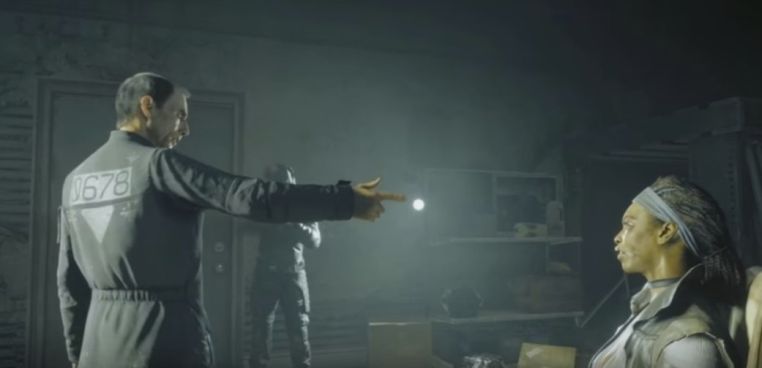
In the following video excerpt, an enemy official (pictured above) taunts his captives, telling them that he can kill them merely by pretending that his hand is a gun. Meanwhile, a fully armed soldier stands beside him, mirroring his actions with an actual loaded weapon. Notice how the music swells to a crescendo before the gun fires, and then ceases completely until after the enemy official speaks again. (Warning: M-rated language, violence, and possible spoilers)
In this blog we've explored the crucial role that tension and intensity plays in music composition. We've studied how our music can shape the narrative tension of a video game. We've considered many expert opinions and looked at several examples (including some from one of my own projects, the Homefront: The Revolution video game). When we began this discussion, we quoted Henry David Thoreau, so perhaps we should end things with another quote, this time from Thoreau's famous mentor, Ralph Waldo Emerson:
"The world is all gates, all opportunities, strings of tension waiting to be struck."
I hope we'll all enjoy the challenge of striking just the right notes of tension in the music for our projects! Thanks for reading, and please feel free to share your thoughts in the comments below!
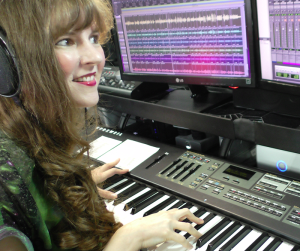 Winifred Phillips is an award-winning video game music composer. Her credits include five of the most famous and popular franchises in video gaming: Assassin’s Creed, LittleBigPlanet, Total War, God of War, and The Sims. She is the author of the award-winning bestseller A COMPOSER'S GUIDE TO GAME MUSIC, published by the Massachusetts Institute of Technology Press. Follow her on Twitter @winphillips.
Winifred Phillips is an award-winning video game music composer. Her credits include five of the most famous and popular franchises in video gaming: Assassin’s Creed, LittleBigPlanet, Total War, God of War, and The Sims. She is the author of the award-winning bestseller A COMPOSER'S GUIDE TO GAME MUSIC, published by the Massachusetts Institute of Technology Press. Follow her on Twitter @winphillips.
Read more about:
Featured BlogsYou May Also Like